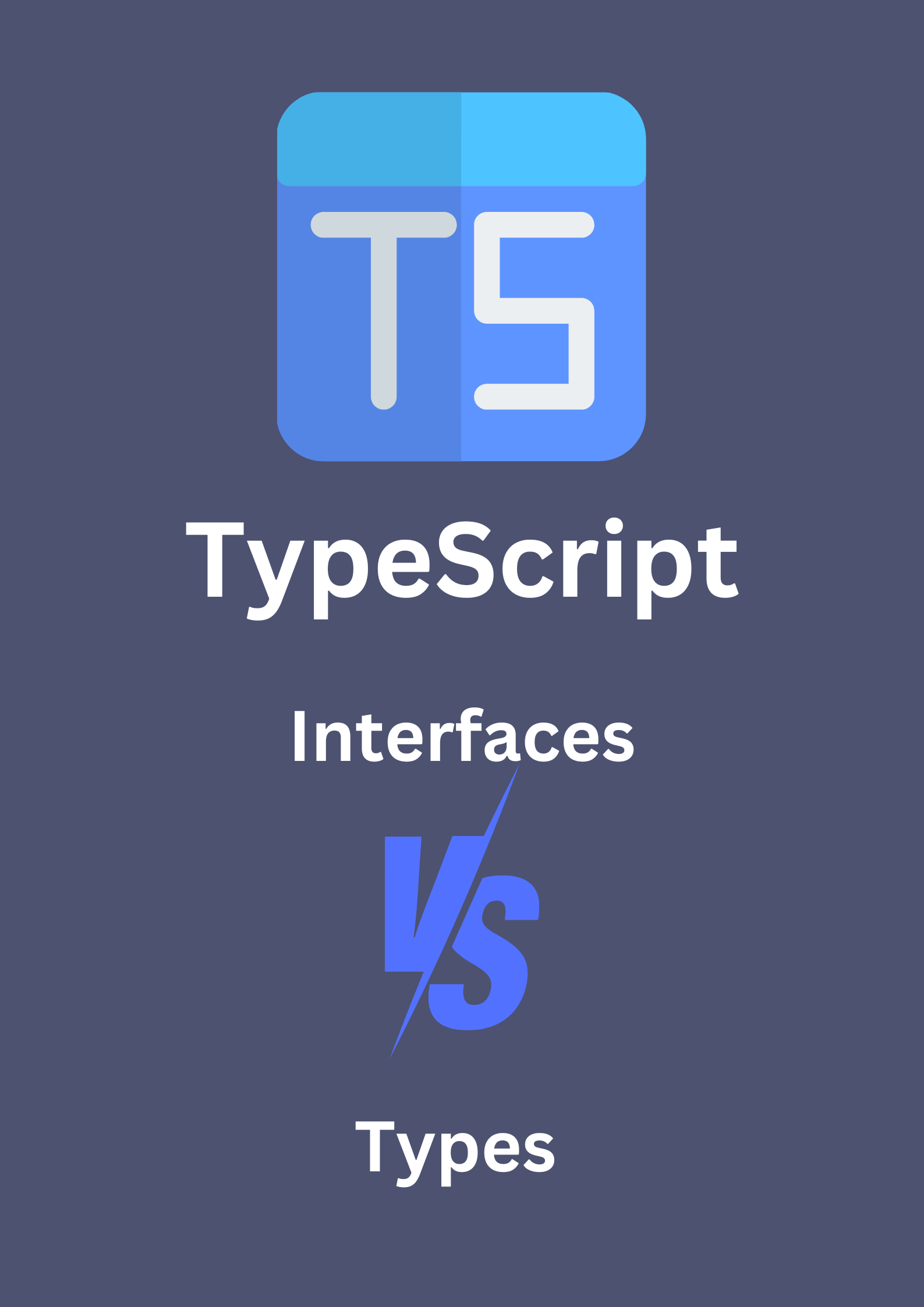When diving into TypeScript, you might initially find interfaces and types quite similar, especially in how they describe object shapes. This can lead to confusion about when to use each. However, a closer look reveals distinct differences that can guide your choice.
Check out the same post on my LinkedIn here
Similarity in Syntax
Both interfaces and types can define object structures:
interface IPerson {
name: string;
age: number;
}
type TPerson = {
name: string;
age: number;
};
const person1: IPerson = { name: "Alice", age: 30 };
const person2: TPerson = { name: "Bob", age: 25 };At first glance, IPerson and TPerson seem interchangeable. But their capabilities differ significantly.
Interfaces: The Object-Oriented Specialist
Interfaces are primarily used to define the shape of objects and classes, playing a crucial role in object-oriented programming.
Key Benefits of Interfaces:
1. Object Shape Definition: Ensure objects adhere to a specific structure.
2. Extensibility: Easily extendable, making them ideal for complex object types.
3. Class Contracts: The implements keyword enforces class contracts, promoting robust code.
Example:
interface IAnimal {
name: string;
age: number;
speak(): void;
}
class Dog implements IAnimal {
name: string;
age: number;
constructor(name: string, age: number) {
this.name = name;
this.age = age;
}
speak() {
console.log("Woof!");
}
}Interfaces shine when you need to define consistent object shapes and leverage class-based inheritance.
Types: The Versatile Powerhouse
Types offer broader functionality beyond just describing objects. They are versatile and can represent any data structure.
Key Benefits of Types:
1. Versatility: Represent primitives, unions, intersections, tuples, and more.
2. Complex Type Definitions: Use union (|) and intersection (&) operators for intricate type combinations.
3. Readability: Enhance code clarity, especially with complex types.
type TName = string;
type TAge = number;
type TPerson = {
name: TName;
age: TAge;
};
type TAnimal = {
name: string;
age: number;
speak(): void;
};
type TDog = TAnimal & { breed: string };
const myDog: TDog = {
name: "Buddy",
age: 5,
breed: "Golden Retriever",
speak() {
console.log("Woof!");
}
};Types are your go-to for flexibility and readability, accommodating complex type requirements with ease.
Choosing Between Interfaces and Types
Understanding the strengths and limitations of each helps in making an informed decision:
Use Interfaces When:
– Working with objects or classes.
– Defining consistent contracts for objects.
– Extending or merging object definitions.
Use Types When:
– Defining any type of data structure.
– Working with unions, intersections, or primitives.
– Needing flexibility and readability in type definitions.
In TypeScript, interfaces and types serve different purposes. Interfaces are tailored for object-oriented programming, providing a clear structure and extensibility for object shapes. Types, on the other hand, offer unmatched versatility and are ideal for a wide range of data structures.
By leveraging the unique strengths of interfaces and types, you can write more expressive, maintainable, and robust TypeScript code. Embrace these tools to create clear, self-documenting code that stands the test of time.
Feel free to connect if you have any questions about TypeScript or other programming topics!

Leave a Reply